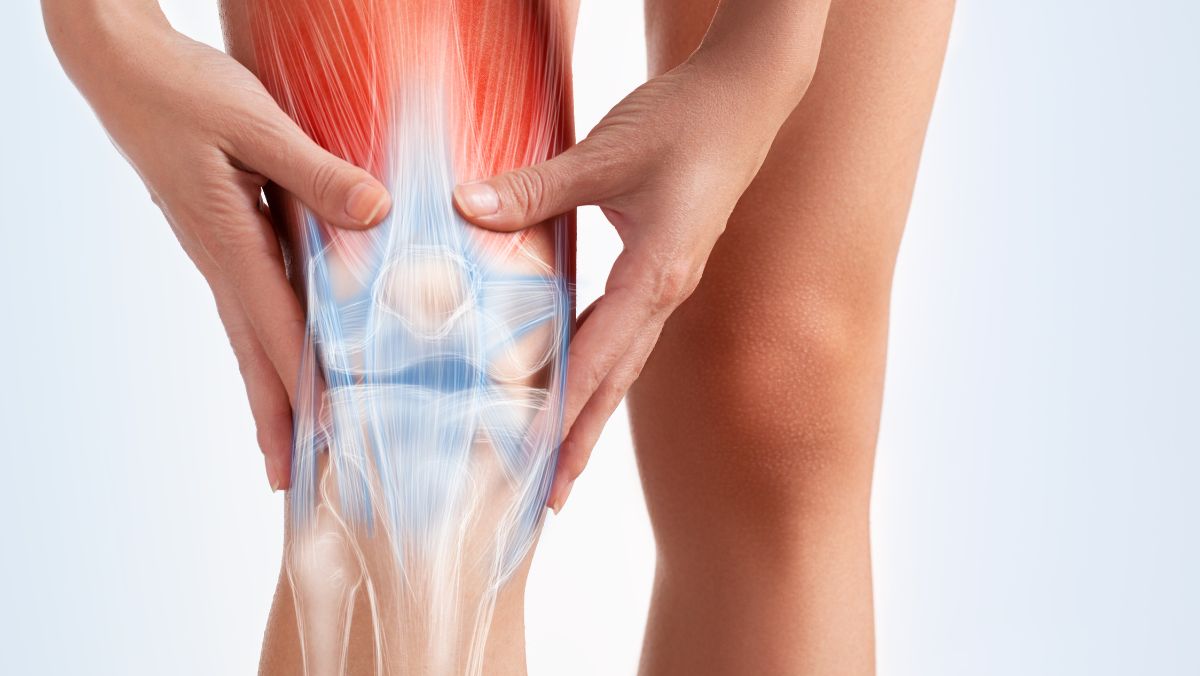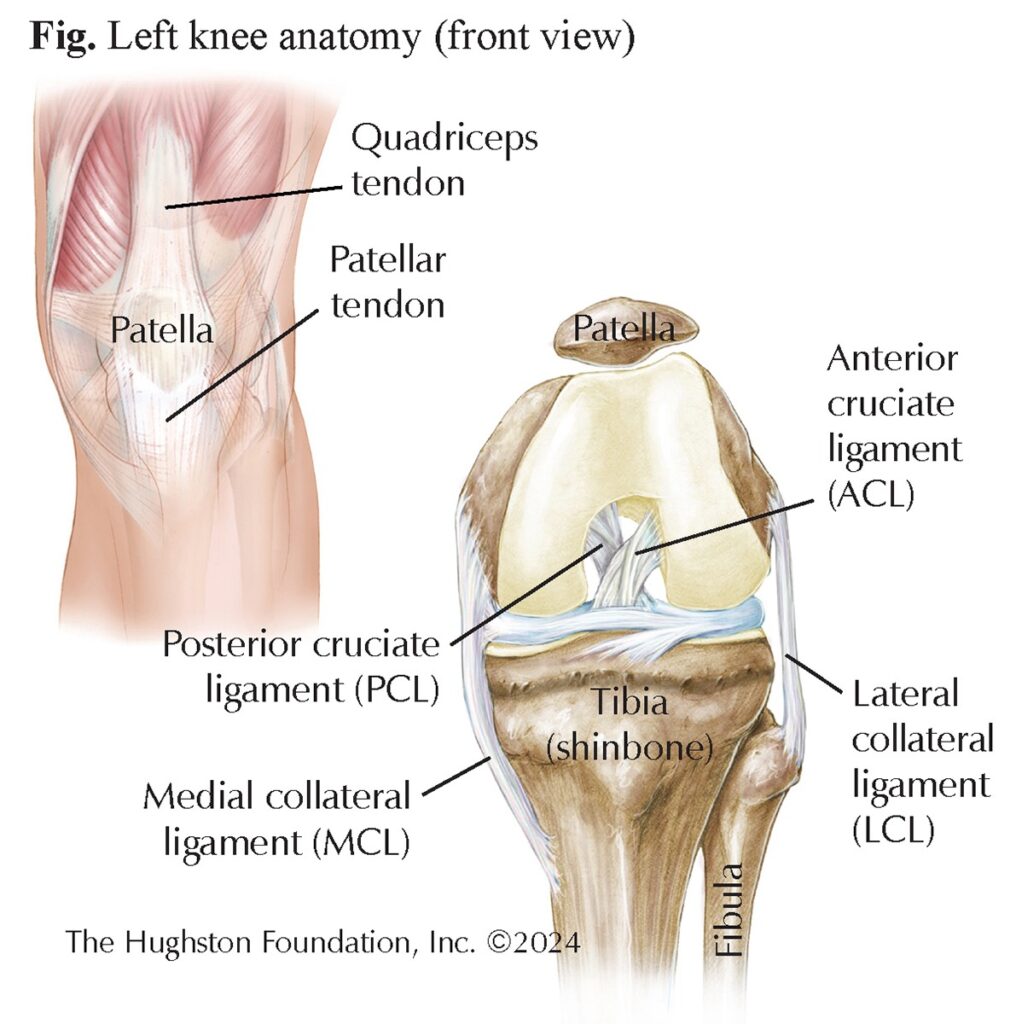Contributing physicians in this story

Anterior cruciate ligament (ACL) injuries are common among athletes and active individuals. Injury to the ACL can lead to significant functional limitations and decreased quality of life. There are 4 main ligaments (tissue that connects bone to bone) that help stabilize the knee. The medial (inner side) and lateral (outer side) collateral ligaments resist side-to-side motion. The cruciate ligaments, the anterior (front) and posterior (back), form a cross shape in the center portion of the knee and resist forward and backward motion. The ACL provides most of the support that prevents the tibia (shinbone) from slipping forward against the femur (thighbone) (Fig).

The standard surgical treatment for ACL injuries is reconstruction by replacing the injured ligament using an allograft (tissue from a tissue donor) or an autograft, which uses the patient’s own tissue. When the decision has been made to use the patient’s own tissue, the hamstring tendons, or the central portion of the patellar tendon with bone plugs on either end have historically been the options. However, harvesting from these sites carries significant risk of patella (kneecap) fracture, pain while kneeling, hamstring weakness at the back of the thigh, and possible sensory nerve injury. More recently, the quadriceps tendon has gained popularity as a graft choice for ACL reconstruction and has even been called, “the graft of the future!”1 by researchers.
Quad tendon ACL
Why has the “quad tendon ACL” become so popular? For one, the quadriceps tendon is a very robust tissue that contains more collagen, strength filaments, than the patellar tendon and actually can withstand 70% more of a load compared to a patellar tendon graft of similar width.2 Additionally, the biomechanical properties of the quad tendon are more similar to the native ACL when compared to the hamstring and patellar tendon, which optimizes the function and stability of the reconstructed tendon.3 Patients often notice the cosmetic benefits of quad tendon graft versus other grafts because the incision is typically much smaller. Harvesting a patellar tendon graft typically involves a large midline incision over the knee and cutting blocks of bone on both sides of the tendon, which can lead to significant pain and even fracture of the residual bone in that area. Alternatively, harvesting the quad tendon can be done through a very small 1 ½ cm incision, does not involve any cutting of the bone, and consistently results in similar patient outcomes and success rates when compared to other graft types.4,5 Patients often report less pain with quad tendon harvest versus other graft types as well.
The “quad tendon ACL” is a viable option for active patients who may be interested in using their own graft tissue rather than an allograft. Scientific studies published in the medical literature provide evidence that an ACL reconstruction using a quad tendon graft can result in comparable outcomes to historical graft types with comparably lower complications to the patient.6 However, as with any surgery you should discuss the benefits and risks of all graft options for ACL reconstruction with your surgeon.
Author: Bradley L. Young, MD | Auburn, AL
References:
- Xerogeanes JW. Quadriceps tendon graft for anterior cruciate ligament reconstruction: THE GRAFT OF THE FUTURE! Arthroscopy. 2019 Mar;35(3):696-697.
- Shani RH, Umpierez E, Nasert M, et al. Biomechanical comparison of quadriceps and patellar tendon grafts in anterior cruciate ligament reconstruction. Arthroscopy. 2016 Jan;32(1):71-75.
- Hart D, Gurney-Dunlop T, Leiter J, et al. Biomechanics of hamstring tendon, quadriceps tendon, and bone-patellar tendon-bone grafts for anterior cruciate ligament reconstruction: a cadaveric study. European Journal of Orthopaedic Surgery & Traumatology. 2023;33(4):1067-1074.
- Sherman SL, Hogan DW, Geeslin DW, et al. Comparison of bone-patella tendon-bone (BTB) and quadriceps autograft for ACL reconstruction in patients under 18 years of age. Orthopaedic Journal of Sports Medicine. 2020 Apr;8 (4 suppl3):2325967120S00278 PMCID: PMC7225818.
- Cohen D, Slawaska-Eng D, Almasri M, et al. Quadriceps ACL reconstruction techniques and outcomes: an updated scoping review of the quadriceps tendon. Current Reviews in Musculoskeletal Medicine. 2021;14(6):462-474.
- Dai W, Leng X, Wang J, et al. Quadriceps tendon autograft versus bone-patellar tendon-bone and hamstring tendon autograft for anterior cruciate ligament reconstruction: a systematic review and meta-analysis. American Journal of Sports Medicine. 2022;50(12):3425-3439.
Last edited on March 19, 2024